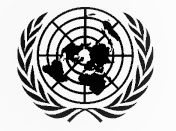Pre-mission planning
When the Secretary-General decides to initiate an
investigation of the alleged use of CBT weapons, pre-mission planning should immediately be initiated. Pre-mission planning includes a variety of activities.
The Secretary-General should convene expert(s) to assess the health, safety, and security risks that the team could reasonably anticipate during the mission based on the information provided by the requesting state (see Appendix 1) and all sources of pertinent, data available to the Secretary-General. As new data becomes available, the state requesting the investigation should update the information that it provides to the Secretary-General. The investigating team should reassess the health, safety, and security risks as it arrives at the investigation site and periodically throughout the mission.
The expert(s) should also develop a mission plan that consists of several elements, including the following:
- a sample collection and analysis plan;
- an interview plan;
- resource requirements;
- logistics plan, and,
- command and control plan.
The sampling plan. Specific to the alleged event, the expert(s) should articulate the appropriate measures to establish whether CBT’ weapons have been used. The expert(s) should work out the details of the sampling plan in consultation with the laboratories likely to perform the sample analysis. The sampling plan should include:
- the sample collection strategy and techniques to be used, including sampling from locations where the agent might naturally concentrate;
- the amount of samples to be collected, based on available guidelines for sampling and in
consultation with laboratories likely to perform sample analysis; - the materials and storage conditions, including packing for shipment, necessary to preserve the integrity
of samples during storage and transportation; - analysis methods to be employed;
- identification of samples previously taken by other authorities and organizations and consideration of how
such samples might factor into the investigation; and, - consideration of any special requirements for chain of custody, shipment of samples, including initiation of clearances with carriers and the Member State(s) involved.
This sampling plan should be refined once the team is on location.
The interview plan. During the pre-mission planning process, the expert(s) should create an interview plan
specific to the circumstances known from the risk assessment. Working from medical, epidemiological, and other (e.g., veterinary) questionnaires developed by relevant international organizations, the experts should tailor interview
questionnaires (See Appendix IX.).
Resource requirements and logistics. Based on the risk assessment and the mission plan, the expert(s) should make several
recommendations to the Secretary-General regarding the resources required for
the upcoming mission:
- the type and number of experts appropriate for the investigation;
- the type and amount of equipment required to ensure the health and safety of the team and to enable the anticipated investigatory tasks; and,
- the type and number of laboratories selected to perform sample analysis.
As the Secretary-General selects and assembles the investigation team, the expert(s) should plan the appropriate medical support for the team and consider whether any additional training is required for the mission location. The expert(s) should also plan for the interpretation needs for witness and medical interviews and other investigation activities.
To support the team’s deployment to the field, the following activities will be necessary:
- signing of relevant agreements by experts to be deployed;
- fitting of personal protective equipment;
- personnel travel planning, including passports and visas;
- arrangements for the transport of the equipment required for the investigation; and,
- if appropriate, additional training.
Among other factors pertinent to the conduct of the investigation, the Secretary-General
will want to establish with the receiving Member State the proper assurances that the equipment and personnel
for the investigation mission will be cleared for entry into, movement within, and exit from the Member State.
The Secretary-General will also want to seek the cooperation of the receiving Member State in facilitating the
investigation team’s communications while in country either by: 1) identifying acceptable radio frequencies or, 2) providing communication means for the investigation team.
Organization of the investigating team. Clear command and control is essential to the efficiency and success of an investigatory mission. Command and control principles should be set during the pre-mission planning process and clearly understood among the investigative team to establish authority, responsibility, and accountability among team members. Among other things, command and control principles should clarify:
- rules of the investigation, including permissible and non-permissible activities;
- chain of command;
- specific functions and tasks of various team members;
- channels of communication;
- agreed protocols for tasks; and,
- the agreed priority and schedule for tasks.
The expert(s) may recommend that an individual be identified and designated to manage the collection, chain of custody, storage, and transport of samples.
The Secretary-General will designate a team leader for this investigation mission. Unless another team member is authorized to function in this capacity, the team leader will be the point of contact for interaction with United Nations Headquarters and host authorities.
Pre-planning should be accomplished in a time-efficient manner in order to be able to deploy an investigative team promptly.

